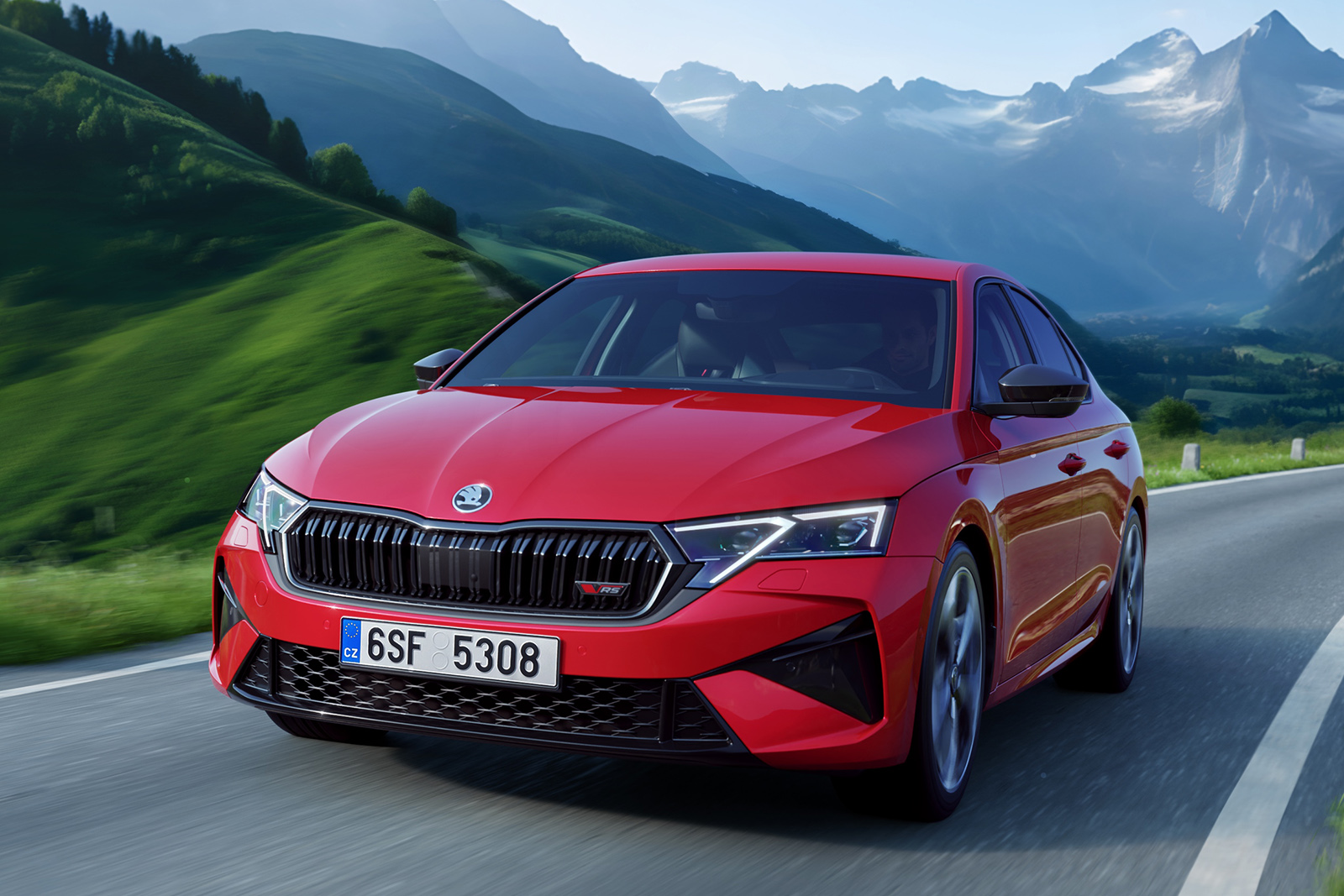Skoda has revealed the Octavia’s mid-life facelift, bringing technology and sustainability upgrades for its best-selling hatchback.
The new look is distinct from the rest of the Skoda line-up, with more angular LED headlights nestled above a bold crease in the front bumper – producing a reference to the Czech flag that is especially pronounced on the vRS range-topper.
The most notable refinements come inside the new Octavia. A new 13.0in infotainment touchscreen (shared with the recently updated Volkswagen Golf) has been added as an optional extra.
Regardless of which screen is fitted, ChatGPT artificial intelligence is integrated into the infotainment software’s voice assistant, with Skoda promising flexibility and capabilities “far beyond” its current iteration.
The options for charging devices have also been upgraded, with the new ‘Phone Box’ providing up to 15W wireless charging – and, crucially, air conditioning to help mitigate the heat generated in the process. Moreover, the USB-C connections now deliver 45W, triple what they provide in the outgoing Octavia.
The three ‘smart dial’ controls introduced on the new Kodiaq and Superb – which provide a physical interface for various functions, such as the air conditioning, sat-nav zoom and drive mode – have not been included. As such, the only way to adjust the temperature in the new Octavia is to use the touchscreen.
Skoda has placed an emphasis on the use of sustainable materials in the new Octavia: the leather seats featured as part of the Suite upgrade package are tanned using coffee husks, rather than chemical dyes, while the cloth seats featured as part of the Lodge and Sportline interiors are made from recycled fibres.
The ‘Simply Clever’ ice scraper and optional umbrella have also made the switch to more sustainable materials, according to Skoda.
Under the skin, the Octavia’s tweaks are primarily aimed at boosting efficiency. The entry-level 114bhp 1.5-litre powerplant’s turbocharger has been reworked to minimise thermal losses and boost economy. It’s paired with a six-speed manual gearbox as standard, but it can be had with a seven-speed dual-clutch ’box. Going for the auto adds a 48V mild-hybrid system that does not add any additional power or torque but allows the car to coast with the engine completely off – boosting fuel efficiency.
The 1.5-litre unit can also be had with 148bhp, offering the same combination of manual and auto ’boxes, with the latter mild-hybridised.
The range-topping vRS gets the same turbocharged 2.0-litre four-pot as the new VW Golf GTI, sending 261bhp and 273lb ft through the front wheels. The lone gearbox option remains the seven-speed auto, after the manual was dropped last year.

